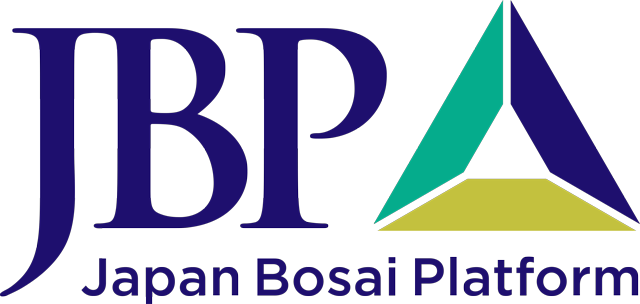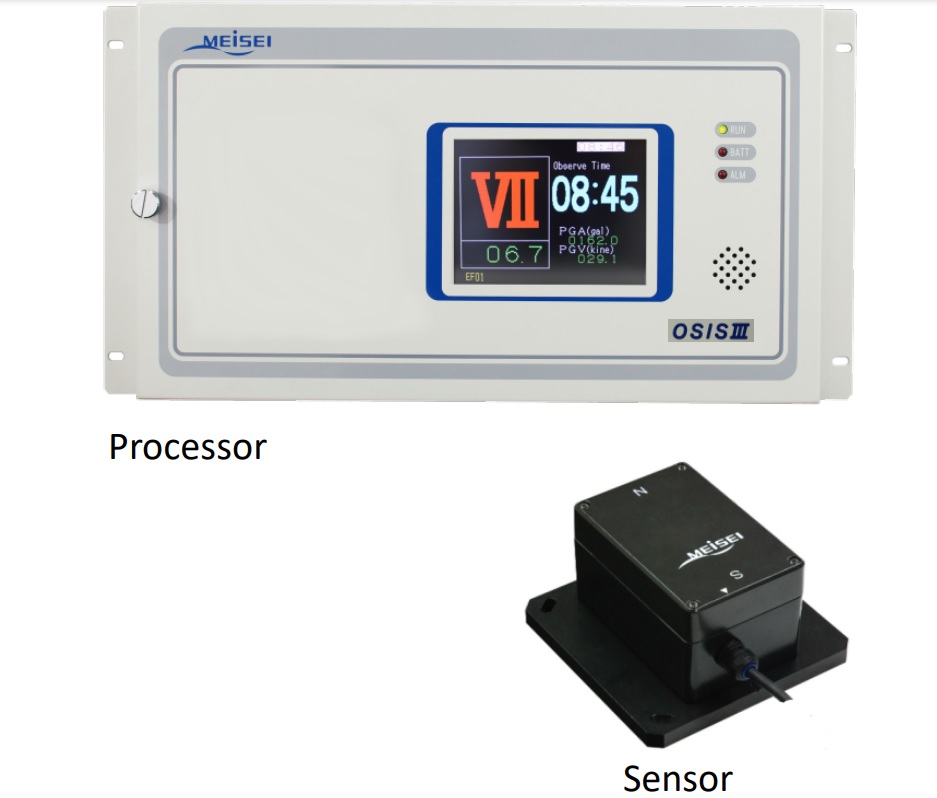
Bosai Solution ID : JBP00081

MEISEI Earthquake Observation Systems
This system observes earthquakes in various facilities in cities and provides information that serves as a standard for disaster response and disaster prevention measures.
Hazard
Solution Purpose
Solution Theme
Risk Assessment
Disaster Prevention Plan
Infrastructure Technology
Building Technology
Information & Communication Technology
Products & Goods
Technology Subject
Risk Monitoring
Legislation & Technical Regulations
Business Continuity Plan
River & Basin
Dam & Reservoir
Road
Railways
Airport
Port
Essential Utilities
Urban
Emergency Base & Back-up Facility
Mitigation Measures for Interior & Facility
Information Gathering
Information Analysis & Judgement
Information Communication
Machinery & Equipment
Advantages
Seismographs detect when an earthquake occurs and the tremor reaches the observation point. The shaking can also be predicted by the Earthquake Early Warning provided by the Japan Meteorological Agency. The control seismometer outputs the real-time seismic intensity 0.3 seconds after the P-wave arrives. The measuring seismic intensity meter accurately outputs the seismic intensity, an important indicator for estimating the scale of damage, in approximately 1 minute. Seismometers are also used to observe long-period seismic motions, which can cause serious damage to high-rise buildings.
Meisei Electric can provide seismometers of various time phases based on its long experience, and can also build a system to integrate and manage them.
Meisei Electric can provide seismometers of various time phases based on its long experience, and can also build a system to integrate and manage them.
Solution Illustrated
Earthquake countermeasures can be taken quickly and damage can be minimized by observing each stage of the time series from the occurrence of an earthquake to the end of the shaking with appropriate equipment.


Background
In Japan,the 1995 Southern Hyogo Prefecture Earthquake delayed initial disaster relief efforts and resulted in the loss of many lives because it took time to ascertain the scale of damage and location due to the disruption of ground communication networks. Therefore, information on seismic intensity was consolidated to the Japan Meteorological Agency via prefectural governments within one minute, and immediately communicated to all citizens through disaster prevention organizations such as fire departments, police departments, and Self-Defense Forces, as well as mass media, and the damage assumption system of the Cabinet Office was automatically activated to establish a disaster rescue system, preventing the "72 hours of life" from being wasted. This information is positioned as the most important information to avoid wasting "72 hours of life.
While magnitude is an indicator of seismic energy, measured seismic intensity is an indicator of the strength of ground shaking and has a strong correlation with the rate of damage to people and buildings. In the past, before scientific observation of earthquakes began, seismic intensity was estimated from ancient documents describing the tremors felt by people, and the epicenter and scale of the earthquake were estimated. Information on seismic intensity is therefore important to prepare for future earthquake disasters.
Measured seismic intensity, calculated from seismograph observations, is objective, unambiguous, and can be used as an official record.
The seismic intensity observation network is the most important earthquake disaster prevention system that should first be deployed at each facility in earthquake-prone areas.


While magnitude is an indicator of seismic energy, measured seismic intensity is an indicator of the strength of ground shaking and has a strong correlation with the rate of damage to people and buildings. In the past, before scientific observation of earthquakes began, seismic intensity was estimated from ancient documents describing the tremors felt by people, and the epicenter and scale of the earthquake were estimated. Information on seismic intensity is therefore important to prepare for future earthquake disasters.
Measured seismic intensity, calculated from seismograph observations, is objective, unambiguous, and can be used as an official record.
The seismic intensity observation network is the most important earthquake disaster prevention system that should first be deployed at each facility in earthquake-prone areas.


Exposition of the Solution
Networks for earthquake disasters, which are infrequent disasters, require remote monitoring and information gathering capabilities for long-term stable operation.

Achievements of Examples
In addition to the accelerometer, the seismometer needs a processor that calculates and outputs the seismic intensity and a time calibration function.


Other References
Corporate Profile
Meisei Electric Co., Ltd.
Toyosu IHI bldg. 10F, 3-1-1 Toyosu, Koto-ku, Tokyo, 135-8115, Japan
Tel. : +81-3-6204-8254
E-mail : product_engmeisei.co.jp
Website : http://www.meisei.co.jp/english/


